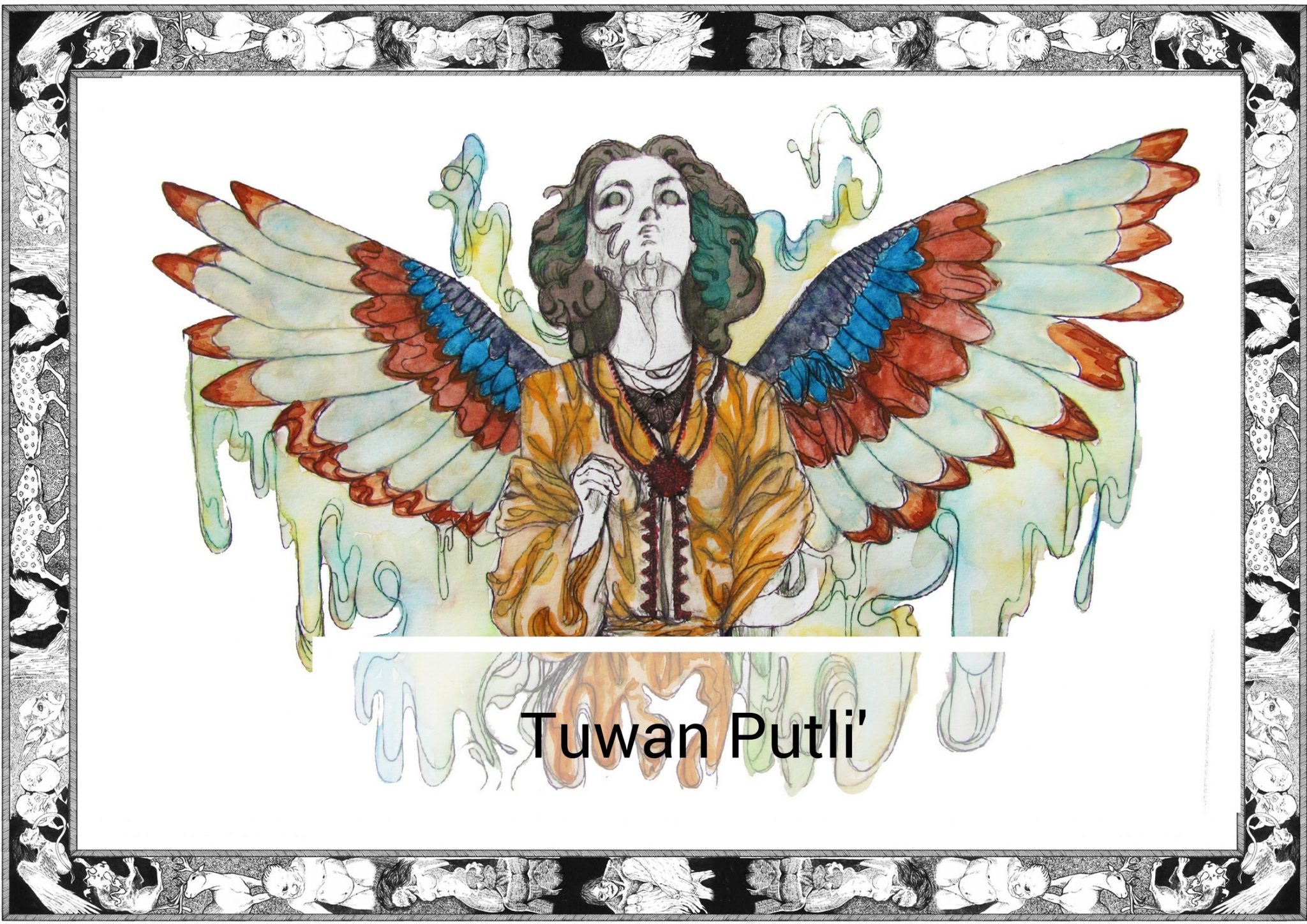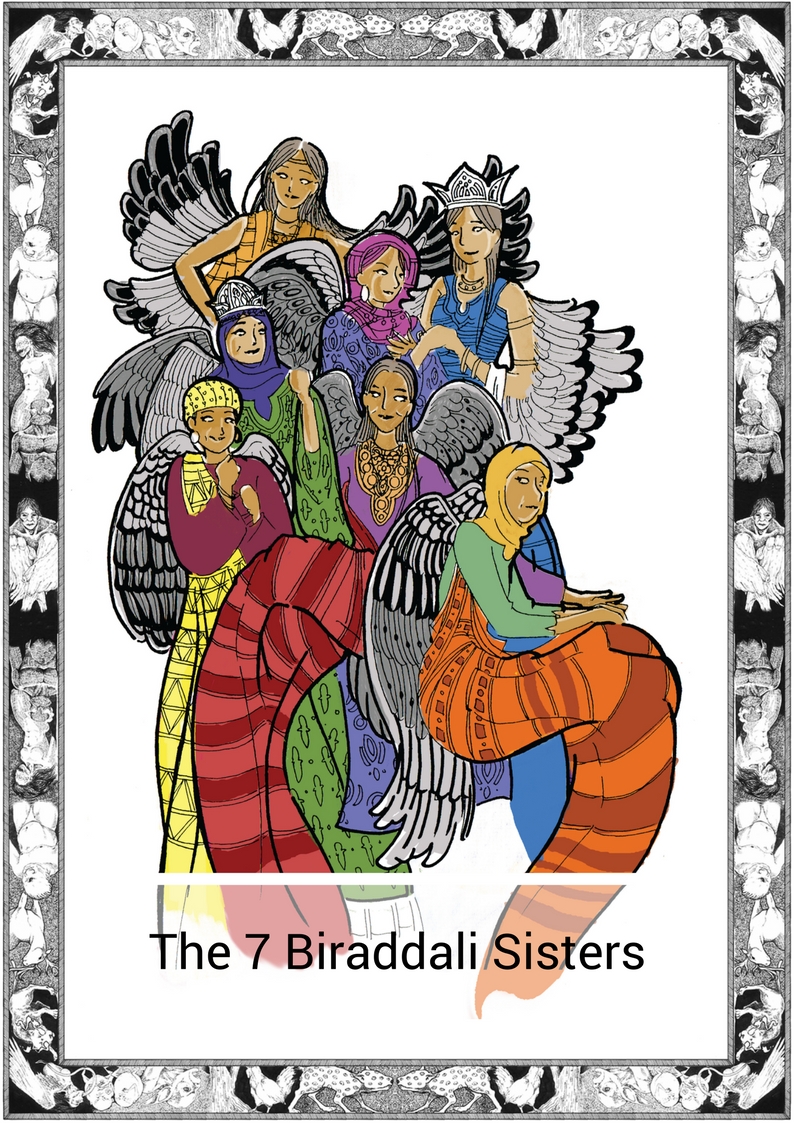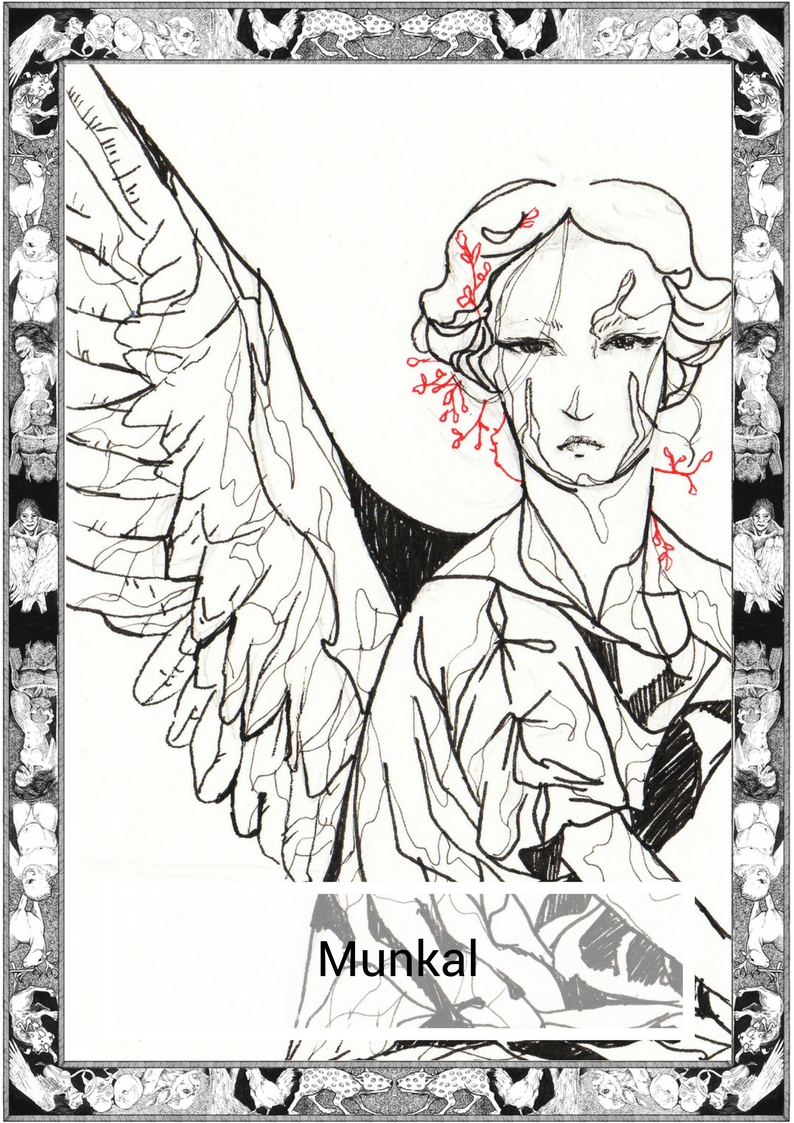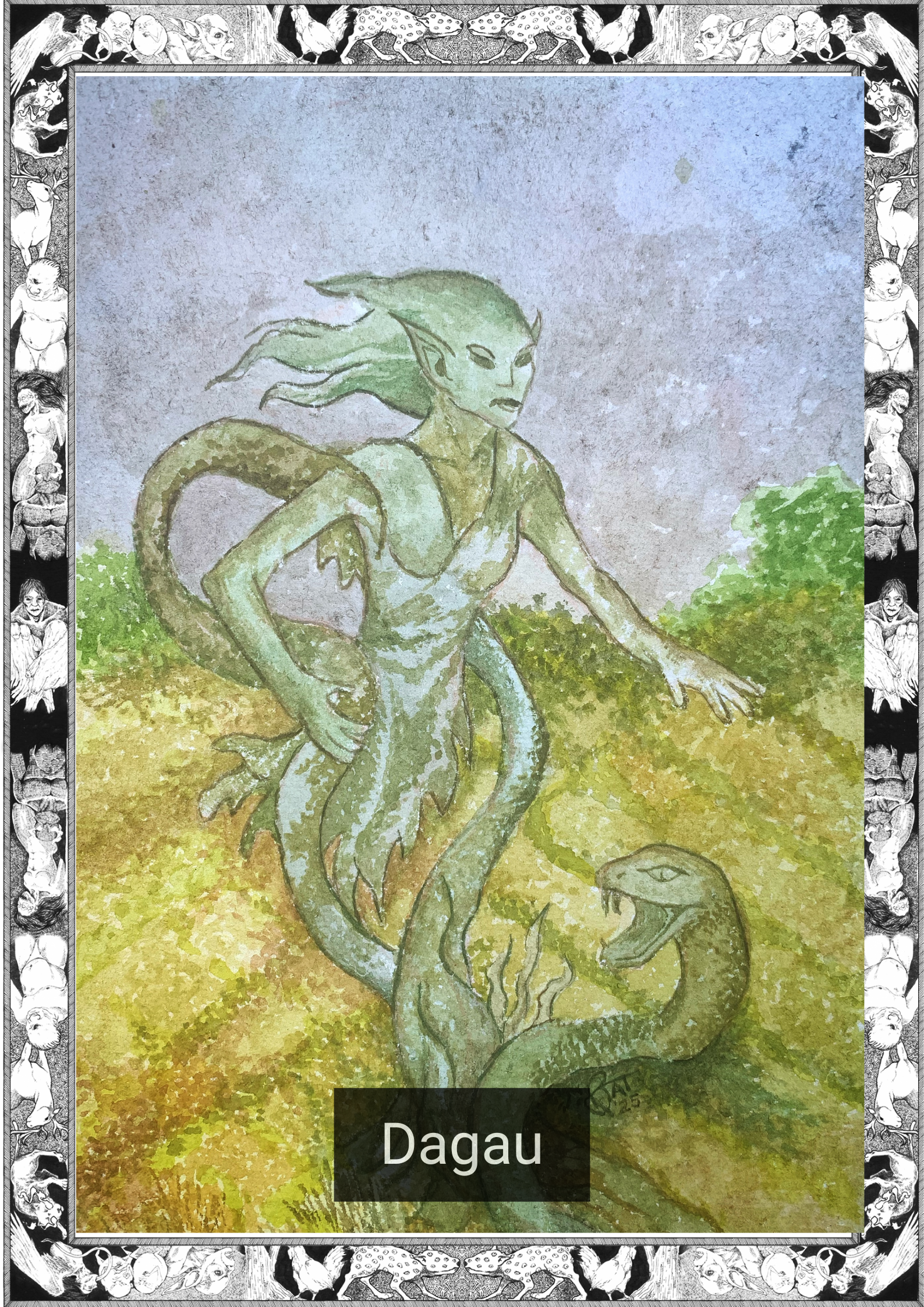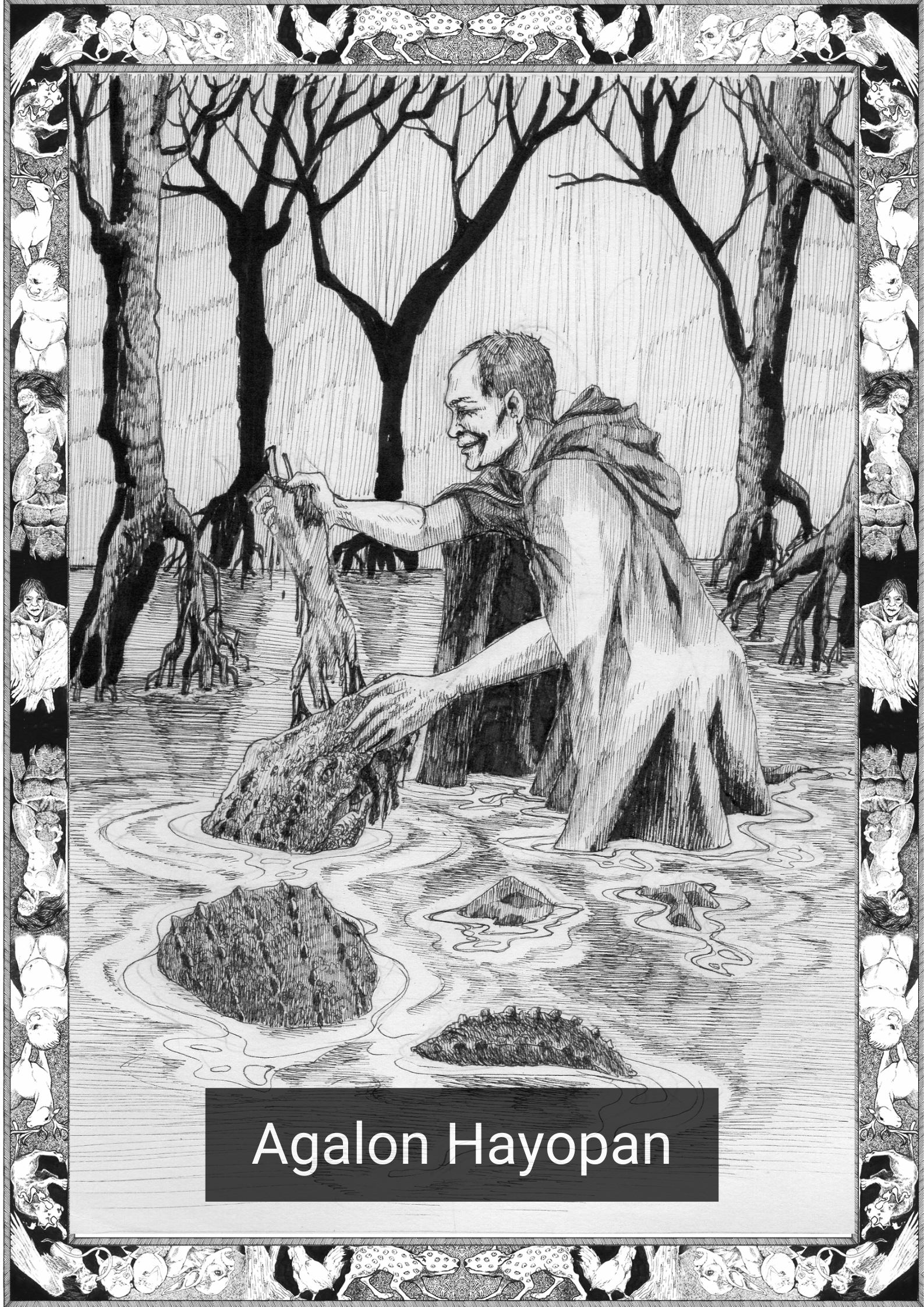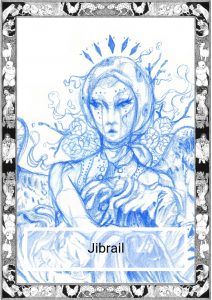 *Note this story is in Kapampangan
*Note this story is in Kapampangan
N’yang minunang panaun, ating malating a anac ing mipanganac. Ya i cahi Nabi’ Isa(o Jesus na cabaluan tamu qing palibut niting yatu), o’neng atin pang aliuang istorya na masanting bukod yapa queng miraculus ning pangayanac.
Meg-umpisa ya cang indu na, cayari ning mepanganac iting Sitti Maryam(o Mary).
Metung ya aldo, yi ning Sitti Maryam cabud nemu dinaldal caring pengari na, anapaya turuanan de canung mangandi(calupa ning pacanu mag ritual ampong manganding pangdebusyunal).
Casi alayang cabalu-balu nung pacanu, mig wa ne man ing tatang, atsu ne murin casi qing istung edad mayap mung atin ya cabaluan qing pamangandi.
Aldo’t bengi paca antabe la ring pengari na caya, at tiruanan deng mangandi caring que gana-ganang cabalualan dang pamingandi.
Misan ya aldo, pegmaragul na tinalacad ya ampong quinulait ya pa anapa ya caring pengari ng adua. Ikwa cunungan ing istung buri cung abalu, patseng buri cung manganding dili.
Deng pengari na sebucan de ampong linawe de cung tutumu in amanuan na, aywa istu ya pin careng puntu at iquit dang mabiyasa neng manganding magdili-dili.
Pepaquit ne rugu cang tatang na, nung pacanu ya magandi limah’ng besis qing quilub ning metung ya aldo.
Luhul, ing cahi culait na patseng ugtu.
Magalib, ing cayang pangandi panga’gatpanapun.
Aisa, neman kadatang ning panga’bengi.
Subu, ing talwing pangandi na qeng abac a ganiyaldu.
Ining Sitti Maryam geua nu ngan dening pamangandi qeng hanggang agyu na. Cayabe ing istung pamaggalo at pamacabisado qeng isip bantang acabisado na lamu dening dacal a pamangandi.
Dinagul yang ing tela ing pama’nganding merapat queng bie na. Gagauan na quing quilub ning anam a pulung’anam a banua ya rugung magdili-dili.
Metung ya aldo, me ngulait ya ing ibpang Diyos a macapangyarian qing gana-gana. Inaus ne i ang’el Jibrail(Gabriel).
Anapa ning Ginu, malulunus cu cang Sitti Maryam case ala cung abiye caya qing panga’dibusyun na canacu.
Anang Jibrail ng quitnangan ne ing ibpang Ginu, ot pacanyan na’niyeman paca’yisipan at picasasabe iting apung Ginu, “Marapat ya’mu apaquit que ing lunus cung depat. Calupa ning lulugug, mayap ya’mong ibalic.”
Minulit yang mengutang cang ibpang Diyos iting Jibrail anang cutang na, “Pacananu mu neman ayalala ampong liguran?” mequibat ya ing ibpang Diyos anapa’ya yi ’ting Sitti Maryam mabalo ya man’yalala canacu pane ya mangandi aldo’t bengi, ica pen cutnangan danaca mu’h Jibrail qing lawe mu nanu caya ing katapat a grasyang abiye tamu.
Ala yang apaquibat sinucu ya yi Jibrail qeng calugdan niting Ibpang Diyos. Panga’cahi dininan ne ing ibpang Diyos yi Jibrail a metung a bangang katmu yang danum anapayang menutos cang Jibrail dala me yan cang Sitti Maryam.
Mengataranta ya yi Jibrail, e- enaman balu nung pacanano ing gauan ng Sitti Maryam queting metung a bangang capnu yang danum.
O’neng mequibat ya ing Ibpang Diyos, ana ilage me queng alimpuyung bunbunan ning buntuc mu(adwang ipu-ipo parting malambut qeng bunbunang buntuc niting bayung panganak a bingut, cayari abang daragul sist’iyas yang cusa).
Anjang mengalito ya man i Jibrail, queng utus ng Ginu inumpisan ne pa murin gawan ing canyang misyun.
Ing ang’el memintunan ya minta ya agad qeng bale ng Sitti Maryam, o’neng maugtu na cayari ene ayabala casi mangandi ne itang oras ayta. Dahil ene buring maish’turbo, niluklok ya pa yi Jibrail ala yang siglang gagawan abang manenaya casi nung manggulo ya qeng pamangandi ing parusa metung a camelyu.
Nang meyari ing pamangandi, tsaca ne migpaquilala i Jibrail geua na qing pamangatuc qeng arap pasbul. Aquilala ne y’agad yi Sitti Maryam ing ang’el ning Ibpang Diyos pacamalan ca-cahi niluklok lang adua ampong manyaman lang mipag-isturya.
Abang mipag-isturya la mecakqua yang tiyempu yi Jibrail memalagua neng lege itang danum qeng alimpuyung butuc ng Sitti Maryam. Ginagad neng geua para ala yang cabaluan qeng dapat ng gaua.
Pinatac ing gap’panapun oras ning pamangandi, carin ne murin meco yi Jibrail. Quinulait ya pa cang Sitti Maryam bantang magpaalam ya, licuanan na neman a pangandi. Cayari na qing pamangandi mipaquirot ya ot apansinan na atin yang danum buntuc, nang’cayi mengua ya capatac lege ne qeng cayang canuan.
Migcasat ya qen cayang cama cacua nang unan tsaca ne metudtud. Panga’gising na quinulait yang masican ausan ne ing cayang yi Ma.
Magtaca ya ing inda qung baquit mengulait ya ing cayang anac. Anapa ng Sitti Maryam, ”Megmulagat cu panga’quera balamu ating aliua cung panandaman. Ali’que abie itang sakto. Jang casi itang gatas mung asususuan cu careng susu mu ala ya qing calingquinan ni’tang manyaman a denasan cu.” mengutang ya yi Sitti Maryam cang inda na palage mu nanu caya’y ta.
Meguibat ya ing inda na, “Palague cu dininan na cang lugud ning Ibpang Diyos careng gewa mung mayap a dapat. Metung mu ibig na ng sabian magui cang suerte qing bayu aldo.”
Pangayari mibalic ya ing inda qeng cayang gagauan ampong ali ne dinaldal qeng milyari.
Mengalabas-labas ing atlong aldo ampong apat a bulan meg-umpisa neng melacu yang gana i Sitti Maryam. Ene ne macapangan masele aldo-aldo, pane yapa mangatalwi patse mangandi neh. Matudtug yamu patinapun tsaka ya tutulo lawe.
Migaganaca ya ing inda ng Sitti Maryam qeng cayang anac, ing masaquit alang macapagbayu qing panamdaman nang Sitti Maryam. Qeng pangalimang bulan pamagpalto nitang ang’el. Nilapit ya ing tatang niting Sitti Maryam qeng cayang inda onemu quening mapapalyari.
Mipapaquirut nemu ng misan migtali yang sarong qeng cayang beuang aliua ya casi ing panga-umbuk ning cayang atsan. Anapaya qing asaua na cutanangan mu nemu ing anac tamu cung ating mumuntang lalake caya.
Awa sigi cayari ning pamangandi ng Sitti Maryam arapan taya.
“Migaganaca ya ing tatang mo queca. Buri ng abalu cun atin cang carelasyon a lalake,” cutang ning inda.
Anang meguibat yi Sitti Maryam, “Alang lalake na lalapit canacu. Aquit me qeng sarili mu, puwera namun caring lamuk ampong lango na ecu la balung palacuan, alang macalub qing kwartu cu. Maquisabi cung mayap sabian mu cang tatang ali ne isipan ing canacung pamanyabian.”
Mengisnaua yang mayap ing cayang inda cayari quinulait ne ing cayang asaua ibalita nemu itang balita. Tinggap ne itang tatang ng Sitti Maryam ing cuentu.
Nilabas ing pitung bulan, masalang aldo mabuctut ya pin i Sitti Maryam. Menutus ya ing tatang na sabian na caya cung ninu ing tatang, oneng panga-inusenti mu ing agyu ng paquibat niting Sitti Maryam.
Abalu da reng siping bale da ing carelang situasyun cayari pengalat de ing milyari.
Penipun niting tatang ng Sitti Maryan reng cayang cababata tsaka deng aliuang propeta ampong deng cayang camag-anak uli mung pisabyan ing bage a milyari.
Sabi da macarine ining milyari, caya micasundo lang mitatang na dinan yang tabla ing cayang atsan para masalicut ing cayang pangabuctut.
Ating lalaeng tutul ampong sinabi ya. “Maniuala cu na ali istu ing pamaglage nitang tabla uli mung asalicut ing cayang buctut. Ngeni aliua mu icatamu ing ating mali baca melaus mica salanan tapa. Cung tutu yang mabuctut eya dapat masipit qeng tabla ining binggut qeng cayang atsan mapalyari uari mate ya.”
Wapin ada reng mititipun a misasabi. Ating metung a mequibat idala ye qeng malaut a lugar para carin nemu mapalyaring manganak. Awa anapa da, ating migaganaca casi mimwa la reng pamilya nitang tatang.
Anapa da cang Sitti Maryam eca magdala jang nanu jang pamangan ampong danum. Cumabye yang muring qeng daralan ng malan qeng gulut na. Cayari dela de ampong penintunan deng lugar na mapalyari caya. Miparas la qeng malanging bunduc, o neng matas ampong matarik ya cayari miras la qeng madicut. Capapagal qeng macabang pamaglakad migdesisyun lang queti da nemu lacuan i Sitti Maryam.
Attangap ng Sitti Maryam ing cayang mipalyari, memintunan ya qeng desisyun ning cayang tatang ampong kamag’anakan.
Iquit ne ing cayang pangatau qeng pamangandi ampong mengandi ya pin qeng Ibpang Diyos, “Canacu ng pamangandi dening adua, mumuna buri cung ibiye ing cacung pamagsalamat, pangadua buri cung magcabaleng maragul queti ngenin.”
Cayari ning cayang pamanagadi, milapalawe ya qing cayang uanan atin ping bale a macatalacad. Catula na o neng aliya meging salabat ing cayang aldo-aldong sasabian ng pangandi.
Mengandi ya minyad yang danum ating bucal a nilual para caya. Mengandi ya para pamangan na cayari atin ping pamangan ing pepalto qeng gigintong platu na ating palibut a perlas.
Menganac ya qing panga apulung bulan na ala mang sinaup caya. Ing binggut pelagui ning Nabi metung yang mataba ampong maculit a y’anac.
Ing pangadatang niting binggut eya meging salabat qeng cayang pamamintu qeng gagauan ning cayang reliiyon. Milabas ing atlong aldo’ atlong bengi ating kinaldas qeng babu yatu sisyentay siete a babaeng ang’el quinulait la caya dinatang la para supan de qing utos ning Ibpang Diyos.
Nilambat la reng ang’el qing quilub ning pitung aldo, cayari mig utos ya ing carelang pinunong ang’el manibat qeng bilang dang sisyente siyete na oras ning pamaglako da.
Queng panga apat ampong apat ya aldo linntu neman ing ba’agari ampong licuan da ne reng aliuang ang’el i Sitti Maryam ampong iting binggut.
Casimple mu ing carelang biye, pane yamu mangandi i Sitti Maryam ampong masalese ya ing catauan niting malating anac.
Metung ya aldo quinulait ya ing tatang ng Sitti Maryam careng camag-anac na uli mung maguibalita ya cung atsu ya pa carin i Sitti Maryam nung nucarin de licuan.
Matacut la kaya. Cabilis da memintu qing utos niting matua. Minta la qeng lugar a talwi deng iquit i Sitti Maryam. Mipaquirut la ngan qeng baleng iquit da abang maca abang neman i Sitti Maryam.
“Nanu ing gagawan mu queti?” cutang na.
“Buri ng abalu ing tatang mu nung nanu na ing mipalyari queca queti,” paquibat na.
Magtacs neman i Sitti Maryam ot baquit bigla nemu meging interesado caya ing tatang na, minsan casi pesabi ne ing cayang tatang na magbiye at masalese ya bili qeng bayu ng bale.
Nang abalu na niting tatang ing caya, papagbalican nalang mi inda.
Mibalik la sebyanan de pa i Sitti Maryam qeng cabaluan na qeng utus ning tatang.
Menandaman ya qing ali misabi-sabi, menalangin ya i Sitti Maryam qeng Ibpang Diyos. Ena balu ot baquit buri neng balican ing cayang tatang cayari ning mengalabas-labas. Cayari ning pang apat dasal minyad ya qing Ibpang Diyos na ibalic na namu ing cayang peparam caya, ampong deng danum ampong bale. Migpasya neng mibalic sunod ne qing utos ng kayang tatang.
Ating buring sumaup bantang ibuat de ing binggut oneng alina ca mag-abala “Ing puwed mu macatalan caya detang taung inutus ning Ibpang Diyos.”
Cauli da ngan atsu ya ing tatang para batyan nalang mi inda. Catula na ning matua ca’it qeng edad na binaba ya ampong selubungan nala.
Ali na peyagang Sitti Maryam na talnan ne ing cayang tatang ing anac na. Anapa na yaku ing balang mamyie permiso nung capilan me atalan ing anac cu. Milabas ing panaun na agyu namung gawan ing tatang lawen ing cayang apu na manmiyalong.
Mipalyari muring abalu da reng tau qeng cayang malalam a pamamalacad ng tatang ng Sitti Maryam ing tungkol qing pangabalic ning anac ng babae cayabe ing cayang anac.
Ing cayang tatang tuloy-tuloy yamu qing panga pinuno qeng pitung distritu, cayari tintratu neng mayap ing que gana-ganang mamintunan careng utus na.
*Ining kwetu ay ti menibat ya careng Tausug bersyon da qeng capanganacan ng Jesus(Nabi’Isa) ampong bie ng Mama Mary(Sitti Maryam)
=————————=
English Version
Long ago, a child was born, Nabi’ Isa (or Jesus as he is known throughout the world), but there is more to his story than just his miraculous birth.
It starts with the birth of his mother, Sitti Maryam (or Mary).
One day Sitti Maryam asked her parents to teach her how to pray (this included the ritual and devotional prayers) for she did not know how to. Her father agreed since she was at the age to learn the prayers.
Days and nights were spent with her parents as they taught her all they knew about prayer until one day she stood proudly and told her parents that she knew all there was to know about her prayers. Her father tested her on all the points of prayer and found her knowledge to be sufficient.
She showed her father how she prayed five times a day. At noon she prayed the luhul and at mid afternoon the ‘asal. She prayed the magalib at sunset and the aisa’ at night and the next dawn she did the subu’ prayers. Sitti Maryam did all her prayers to the best of her ability, going through all the motions and in doing so showed how she had mastered the prayers.
As she grew, her prayers became the fabric of her life. She did this for sixty-six years, all by herself.
One day, God the Almighty summoned the angel Jibrail (Gabriel). God said that He felt sorry for Sitti Maryam because He had nothing to give her for her devotion.
Jibrail asked the Lord why he thought that way and God said, “compassion has to be manifested in acts. It is the same as with love, it should be returned.”
Jibrail asked God another question, “How did you come to remember and love her.” God replied that Sitti Maryam remembered to pray day and night in remembrance of Him, he asked Jibrail how he should reward such faithfulness.
With that, Jibrail surrendered to God’s will. The Lord gave Jibrail a jar full of water and told him to bring it to Sitti Maryam.
Jibrail was confused, he did not know what Sitti Maryam was going to do with a jar of water. But God only replied by saying to put it on the fontanelle of her head (two bony spots in the baby’s skull whose ‘softness’ facilitates the head to pass easily through the birth canal. They harden as the baby grows older.
Puzzled by the Lord Jibrail did as he was told. He set out on his mission.
The angel went to Sitti Maryam’s house, but it was past noon and she was busy praying. To not disturb her, Jibrail sat down and waited quietly since an interruption of her prayers could result in the fine of a camel.
At the end of her prayers Jibrail announced himself by knocking. Sitti Maryam recognized God’s servant and they sat down and engaged in lively conversation.
As they were talking Jibrail saw an opportunity to put the water on Sitti Maryam’s head. He took his chance and did it all without her knowing.
When it came time for the afternoon prayer, Jibrail decided to leave. He bade Sitti Maryam goodbye and left her to her prayers.
As she finished her prayers, she noticed water on her head, of which she took a drop and placed it on her forehead. Then she took a pillow and went to her bed, after which she fell asleep. When she awoke she called for her mother to come.
Her mother was curious as to why she was called by her daughter. Sitti Maryam said, “I woke up feeling unusually well. I cannot describe it. Even the milk I sucked from your breasts never tasted as good as what I have just experienced.” Sitti Maryam asked her mother what she thought of this.
Her mother replied, “Maybe God has rewarded you for your good deeds. It may also mean that you will be lucky in the future.”
And with that her mother returned to her chores and did not mention the incident.
Three or four months went by and Sitti Maryam began to lose her appetite. Not only was she eating less every day, she was often late for her prayers. She would fall asleep during the day and salivate heavily.
Sitti Maryam’s mother was concerned for her daughter, but nothing could change what Sitti Maryam was feeling. On the fifth month after the angel arrived Sitti Maryam’s father approached her mother about the situation.
He had noticed that when she ties her sarong around the waist, her stomach was bulging more than normal. He told his wife to ask their daughter if any man came to her.
Her mother agreed and waited for Sitti Maryam to finish her prayers before confronting her.
“Your father is worried about you. He would like to find out if you had relations with a man,” her mother asked.
Sitti Maryam replied, “No man has ever come near me. You can see that for yourself, except for some mosquitoes and flies which I cannot drive away, nobody can enter my room. Please, tell father not to doubt my word.”
Her mother was relieved and she called her husband and relayed the news. Sitti Maryam’s father accepted the story.
When the seventh month came, it was apparent that Sitti Maryam was pregnant. Her father commanded her to tell who the father was, but Sitti Maryam could only protest her innocence.
It was shortly after that when the situation was discovered by their neighbors and gossip spread fast.
Sitti Maryam’s father gathered his younger brother as well as other prophets and relatives to discuss the matter. They saw the condition as a disgrace and agreed with her father when he wanted to tie a board to her belly to hide her pregnancy.
Only one man dissented and spoke up. He said, “I believe we should not put a board to cover her stomach. In this, we not only might be mistaken but also commit a sin. If it is true that she is with child, then the board may affect the baby who may die from it.”
Those gathered agreed. And another spoke up and said that Sitti Maryam should be taken far away where she could give birth. They all agreed, though some were reluctant as they feared displeasure from the father’s family.
Sitti Maryam was told not to bring anything, no food or water. She was to live with only the clothes on her back. Then they took her away and searched for a place suitable for her. They came upon a barren mountain, but it was too steep and high. After which, they found a plateau. Weary and tired from the long journey they decided this would be the place where they would leave Sitti Maryam.
Sitti Maryam accepted her fate, she abided by the decision of her father and her relatives.
She found solace in prayer and she prayed to God, “My prayer is twofold, first I want to offer thanks, then I am asking that a big house be erected for me now.”
As she finished her prayer, she glanced at her right and there stood a house. She was overwhelmed with happiness but that did not stop her from reciting her daily prayers. She prayed for water and a fountain sprang up for her. She prayed for food and meals were served on a golden plate decorated with beautiful pearls.
On the tenth month she delivered the child without any assistance. The baby, which she named Nabi’ Isa was healthy and playful. The coming of the baby did not stop her from performing her religious duties. After three days and three nights seventy-seven female angels came down from heaven and they said that they came to assist her under the orders of God.
The angels stayed for seven days after which the leader of the angels bade seventy of their number to leave. On the forty fourth day a rainbow appeared and the rest of the angels left Sitti Maryam and the baby.
Their life was simple, Sitti Maryam continued to pray and the child remained healthy.
One day, Sitti Maryam’s father called another assembly. He sent for his relatives to find out if Sitti Maryam was still where they abandoned her.
As they were afraid, they obeyed his order and went to where they last saw Sitti Maryam. They were surprised to find a house and were greeted by Sitti Maryam.
“Why have you come?” she asked.
“Your father wants to know what became of you,” was their reply.
Sitti Maryam wondered why her father was suddenly interested in her, but since it was her father she told them to tell him that she was still alive and comfortable in her new home.
When her father found out her he ordered that both Sitti Maryam and the child be brought back.
They returned and told Sitti Maryam about her father’s orders.
Feeling conflicted, Sitti Maryam prayed to God. She did not know why her father wanted her back after all that had happened. After the fourth prayer she asked God to take back all that was lent to her and the house and fountain vanished. She had decided to obey her father’s wish and return.
Her companions wanted to help her carry the child but she refused saying, “Only those who cared for him are allowed to touch him.”
They all made it safely home and her father was there to greet them. The old man was so ecstatic that even in spite of his age, he went down and met them.
Sitti Maryam would not let her father touch the child. She told her father that she would decide in due time when he could carry the baby. This went on for some time, and all he could do was watch his grandchild play.
In the meantime, all people under the rule of Sitti Maryam’s father came to know of the daughter that returned and the child that was with her. Her father continued to rule over his seven districts, treating all his followers well.
*This story is based on the Tausug version of the birth of Jesus (Nabi’ Isa) and the life of Mama Mary (Sitti Maryam).
* Kapampangan, Pampango, or the Pampangan language is a major Philippine language. It is primarily spoken in the province of Pampanga, southern Tarlac, and northeastern Bataan. Kapampangan is also spoken in some municipalities of Bulacan and Nueva Ecija, by various Aeta groups of Central Luzon, and in scattered communities within the SOCCSKSARGEN region in Mindanao. The language is known honorifically as Amánung Sísuan (“breastfed, or nurtured, language”)
Written by Karl Gaverza
Copyright © Karl Gaverza
Translation Copyright © Yan Lim
Adapted from Sitti Maryam. Lady Mary. Narrated by Mullung. in Voices from Sulu A Collection of Tausug Oral Traditions. Rixhon ed. 2010.
Jibrail Illustration by emirajuju
IG: https://www.instagram.com/emirajuju/

